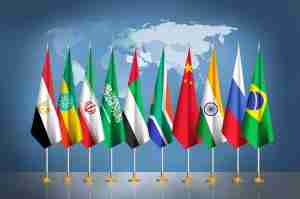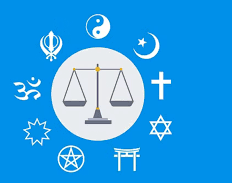A] Introduction
The ascent of the Bharatiya Janata Party (BJP) since 2014 underlines an ideological, political, and institutional realignment in India toward majoritarian Hindu nationalism. Once marginalized, the right wing is now central to governance, cultural discourse, and national identity. The right wing is rooted in the ideology of Hindutva.
This transformation raises a key question: where is India’s right-wing politics headed in ideology, institution-building, and democratic impact?
B] Historical Evolution
The earlier ideological foundations of Indian right-wing politics lie in the late colonial period. Foremost among them was Vinayak Damodar Savarkar.
In 1923, Savarkar penned ‘Hindutva: Who is a Hindu?’ – the foundational text of Hindutva ideology. Savarkar defined Hindutva as the shared cultural nationalism of all those who consider India their pitṛbhūmi (fatherland) and punyabhūmi (holy land).
He nurtured what he called the “political Hindu” – a proudly modern but staunchly nationalist Hindu who would eschew cosmopolitan universalism in favour of asserting Hindu primacy in India.
Another towering ideologue was M. S. Golwalkar. He took an even harder line on minorities than Savarkar, suggesting that non-Hindu “foreign races” in India must either adopt Hindu culture wholly or live “wholly subordinated to the Hindu nation.”
Both Savarkar and Golwalkar laid the ideological groundwork, advancing India as a Hindu civilizational nation rather than a secular republic. The RSS (founded by Hedgewar in 1925) institutionalized this ideology via disciplined shakhas, shaping a cultural corps unified across caste and region.
Syama Prasad Mookerjee’s Bharatiya Jana Sangh (1951) translated Hindutva into electoral politics, most visibly through opposition to Article 370 and advocacy for Hindu-centric policies. Yet, until the late 1980s, the Hindu right remained electorally weak.
C] Ram Janmabhoomi and BJP’s Rise
The true resurgence of right-wing Hindu politics unfolded in the late 1980s and early 1990s, around the emotionally charged Ram Janmabhoomi movement. This movement propelled the BJP from a fringe player to a national force, especially after the 1992 Babri Masjid demolition. The rise of leaders like Advani and Vajpayee culminated in the BJP-led coalition in 1998.
Yet, BJP 1.0 under Vajpayee maintained a cautious stance on hardline Hindutva demands, avoiding controversial symbols like Ayodhya or uniform civil code until foundational support was strong.
D] Right‑Wing Politics Post‑2014: Ascendancy and Consolidation
Modi’s 2014 victory ushered in BJP 2.0. After decades, a single party got majority at the Centre. Modi’s 2014 campaign deftly blended promises of economic revival (*“Achhe Din”) with an undercurrent of Hindu pride and grievance against the outgoing regime.
It brought a highly centralized leadership with immense organizational control. Modi’s persona and IT Cell-driven campaigning made the BJP a monolithic electoral force.
The 2019 reelection of Modi and the BJP by an even larger margin emboldened right-wing dominance. It extended BJP rule deeper into non-Hindi states.
With the ascent of right-wing politics, Hindutva nationalism has moved from margin to mainstream. The idea of nationalism is being reframed and the national identity is getting increasingly tied to Hindu symbols.
Yet the BJP blended identity politics with welfare populism. Schemes likes Swachh Bharat, Ujjwala, housing, insurance broaden appeal beyond core ideology.
This dual strategy—emotive cultural mobilization plus inclusive welfare messaging—has kept support high even outside the traditional Hindutva base.
However, during 2014–19, the BJP followed the strategy of pragmatic incrementalism. It displayed restraint on contentious issues like the Ram Temple or Article 370 repeal, waiting for legal or electoral cover. Some controversial policies were implemented at state level such as beef bans, textbook revision, renaming of cities, etc.
After 2019, however, central government delivered on major promises. Article 370 was abrogated, the Citizenship Amendment Act (CAA) was passed, and the Ram Mandir consecrated in 2024.
A draft Uniform Civil Code and the implementation of NEP (third term ambitions) hint at future ideological ambitions of BJP
E] Ideological Landscape: Hindutva and Beyond
Hindutva has transitioned from religious nationalism to civilizational state. Hindutva now presents a vision of India as a Hindu civilization state (Vishwaguru), stressing ancient heritage, soft power (Yoga Day, temple diplomacy), and identity-based foreign policy. Statecraft and symbols are infused with Hindu imagery.
Non-Hindu communities—Jains, Sikhs, Buddhists—are often rhetorically included under a broader Hindu fold, but only under conditions of cultural conformity, echoing Golwalkar’s vision.
On the question of caste, the BJP has deliberately championed OBC and Dalit leaders. It wants to break its upper-caste stereotype and expand its caste base. Even as economic liberalism and global investment remain central to its growth narrative.
Another facet is the intersection of Hindutva with economic governance. Traditionally, the RSS’s economic philosophy was swadeshi – protectionist, small-scale industry oriented, and sceptical of globalization. BJP (especially under Vajpayee and then Modi) has leaned more towards market reforms and big-business growth. This had raised questions: would the BJP pursue Western-style economic liberalism or bow to its culturally conservative base’s populist instincts?
F] Institutional Impact
The politicization of bureaucracy accelerated under Modi with lateral entries, performance-based rewards tied to political loyalty, and campaign mandates directed at civil servants. Raids and investigations against opposition and muted enforcement against ruling-party figures suggest executive agencies serve partisan ends. Many observers now speak of an emerging “committed bureaucracy” that is ideologically in sync with the ruling regime or at least pliant to its demands.
Secondly, parliamentary procedures were routinely circumvented. For instance, Article 370, CAA, and electoral bond amendments were rushed without proper deliberation in the Parliament.
Judiciary reforms have been obstructed and judicial appointments delayed-undermining structural independence. Some court verdicts (such as Ayodhya) often favoured the majoritarian ideology rather than constitutional neutrality.
An independent media is crucial for any robust democracy. Unfortunately, mainstream media has come under pressure through raids or financial investigations. Critical voices self-censor or face legal action. Such crackdowns are detrimental for the health of Indian democracy.
Finally, civil society and NGOs have been cut off via FCRA restrictions. On university campuses, sedition and other laws are used against activists. The public sphere is dominated by majoritarian discourse, with dissent increasingly delegitimized.
G] Comparative Insights
India’s political trajectory mirrors global populist-nationalist trends. Right wing is on the is several parts of the globe. It is often enabled by the rise of charismatic leadership, identity politics, and erosion of Institutions.
For instance, BJP’s rise parallels with Trump’s U.S., Erdoğan’s Turkey or rise of right wing in Europe.
However, India’s trajectory is distinct because of its scale, ancient ideological roots, and internal diversity. Unlike Western xenophobic right-wingism, Hindutva asserts dominance of an indigenous majority. Unlike Israel or Hungary, India has yet to formalize a monolithic state ideology. India still retains constitutional forms—though increasingly hollowed out.
India’s direction now shapes global democratic narratives. If it consolidates illiberalism, it emboldens other populist strongmen; if it corrects, it reaffirms resilience of democracy.
H] Challenges and Criticisms
The most pressing criticism is that India’s democracy – once robust and the world’s largest – is eroding with the rise of right-wing politics. Observers like Freedom House and V‑Dem have downgraded India on democracy indices, citing election authoritarianism, restricted civil liberty, and state weaponization of institutions. Critics warn that formal majoritarian rule next could threaten secularism under the Constitution’s basic structure.
There is tussle going on between economic vs. grievance politics. While the BJP promotes modern infrastructure and welfare schemes, economic growth lags in job creation and inequality. Reforms like demonetization and farm laws became political liabilities. Market-friendly policies sometimes contradict ideological demands—creating tensions within RSS-linked groups.
Finally, the personality cult around Modi unsettles traditional RSS ideals. Economic pragmatism clashes with protectionist ideology. This has uncovered the internal ideological fault lines.
Regional leaders and generational actors may diverge from Hindutva orthodoxy. Post-Modi succession remains unpredictable, with rivals like Yogi Adityanath seen as hardliners and cult figures.
I] Future Trajectories
As India stands at a crossroads in the mid-2020s, speculation abounds on where its ascendant right-wing politics will head next. In this concluding section, we consider possible trajectories for Indian right-wing politics in the near to medium term.
One possible scenario could be the further radicalization of India politics. It would manifest in the implementation of Uniform Civil Code nationally, constitutional codification of Hindu Rastra, state-sanctioned vigilante norms, and leadership under more aggressive figures.
Another possible scenario is that of moderation and consolidation. Once core ideological goals like that of Ram temple and Kashmir are achieved, the BJP may pivot to development and technocratic governance, dialing down communal rhetoric while maintaining core ideological checks covertly.
Electoral Setback in 2024 and the formation of coalition government at the centre could trigger further hardening or push the BJP to moderate and reformulate its message toward growth and pluralist reassurance.
J] Key influencers
The youth factor is critical. Roughly half of India’s population is under 30, meaning they have little memory of the pre-2014 era. A generation is coming of age under BJP’s nationalistic education and media environment. This could mean a lasting shift in societal values towards more conservative, majoritarian outlooks among many young Indians, which bodes well for the right-wing’s longevity.
Already, surveys in recent years show a high degree of support among youth for strong leaders and majoritarian views . If this trend continues, the BJP could rely on a renewable vote-bank of nationalist-minded youth each election.
On the other hand, youth also care about different issues – education quality, employment, freedom to use the internet and express themselves. If the BJP cannot deliver on economic aspirations, there could be youth-led unrest.
BJP dominance in Hindi-heartland may be checked by regional assertions elsewhere (Tamil Nadu, Kerala, Northeast). Outcomes of local elections will determine national balance of power.
Emergent video and decentralized digital platforms could also shape future narratives. Government regulations may clash with youth innovation.
External shocks (economic downturns, climate crisis, security crises) could either bolster strong leaders or catalyze reformist currents.
K] Conclusion
India’s right-wing politics under the BJP and Hindutva has undergone a historic transformation: from fringe ideology to national mainstream; from ideological marginalization to institutional dominance. Yet the consolidation of this project reveals deep contradictions—between ideology and governance, majoritarianism and diversity, charisma and institutions.
India faces a decisive moment: whether to continue as a plural constitutional republic or evolve into a de facto Hindu ethno-democracy.




We want cccc